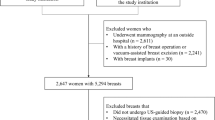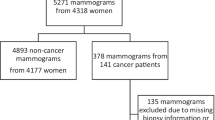Abstract
Purpose
Wireless capsule endoscopy (WCE) is commonly used for noninvasive gastrointestinal tract evaluation, including the detection of mucosal polyps. A new embeddable method for polyp detection in wireless capsule endoscopic images was developed and tested.
Methods
First, possible polyps within the image were extracted using geometric shape features. Next, the candidate regions of interest were evaluated with a boosting based method using textural features. Each step was carefully chosen to accommodate hardware implementation constraints. The method’s performance was evaluated on WCE datasets including 300 images with polyps and 1,200 images without polyps. Hardware implementation of the proposed approach was evaluated to quantitatively demonstrate the feasibility of such integration into the WCE itself.
Results
The boosting based polyp classification demonstrated a sensitivity of 91.0 %, a specificity of 95.2 % and a false detection rate of 4.8 %. This performance is close to that reported recently in systems developed for an online analysis of video colonoscopy images.
Conclusion
A new method for polyp detection in videoendoscopic WCE examinations was developed using boosting based approach. This method achieved good classification performance and can be implemented in situ with embedded hardware.










Similar content being viewed by others
References
Parkin MC, Shin FJ, Forman BF (2008) Globocan 2008 v1.2, cancer incidence and mortality worldwide: Iarc cancerbase no. 10. International Agency for Research on Cancer
Moglia A, Menciassi A, Dario A, Cuschieri A (2009) Capsule endoscopy: progress update and challenges ahead. Nat Rev Gastroenterol Hepatol (6):352–362
Spada C, Hassan C, Munoz-Navas M, Sacher-Huvelin S, Delvaux M et al (2011) Second-generation colon capsule endoscopy compared with colonoscopy. Gastrointest Endosc 74(3):581–589
Bergwerk A, Fleischer D, Gerber J (2007) A capsule endoscopy guide for the practising clinician: technology and troubleshooting. Medline 66(6):1188–1195
Eliakim R et al (2009) Prospective multi center performance evaluation of the second generation colon capsule compared with colonoscopy. Endoscopy 41:1026–1031
Kolar A, Romain O, Ayoub J, Viateur S, Granado B (2010) Prototype of video endoscopic capsule With 3-D imaging capabilities. IEEE Trans Biomed Circuits Syst 4(4):239–249
Ayoub J, Granado B, Mhanna Y, Romain O (2010) SVM based colon polyps classifier in a wireless active stereo endoscope. In: 2010 IEEE EMBC, pp 5585–5588
Liu M, Lu L, Bi J, Raykar V, Wolf M, Salganicoff M, (2011) Robust large scale prone-supine polyp matching using local features: a metric learning approach. In: Fichtinger G, Martel A, Peters T (eds) Medical image computing and computer-assisted intervention MICCAI 2011, vol. 6893 of Lecture Notes in Computer Science. Springer, Berlin, pp 75–82
Bernal J, Sanchez J, Vilariño F (2012) Towards automatic polyp detection with a polyp appearance model. Pattern Recogn 45(9):3166–3182
Figueiredo PN, Figueiredo IN, Prasath S, Tsai R (2011) Automatic polyp detection in pillcam colon 2 capsule images and videos: preliminary feasibility report. Diagn Ther Endosc. doi:10.1155/2011/182435
Karargyris A, Bourbakis N (2009) Identification of polyps in wireless capsule endoscopy videos using log gabor filters. In: IEEE workshop LiSSA, pp 143–147
Kodogiannis V, Boulougoura M (2007) An adaptive neurofuzzy approach for the diagnosis in wireless capsule endoscopy imaging. Int J Inf Technol 13:46–56
Tagzout S, Achour K, Djekoune O (2001) Hough transform algorithm for fpga implementation. Signal Process 81(6):1295–1301
Davis LS, Johns SA, Aggarwal JK (1979) Texture analysis using generalized co-occurrence matrices. IEEE Trans Pattern Anal Mach Intell PAMI–1(3):251–259
Haralick RM (1979) Statistical and structural approaches to texture. Proc IEEE 67(5):786–804
Iakovidis DK, Maroulis DE, Bariamis DG (2007) Fpga architecture for fast parallel computation of co-occurrence matrices. Microprocess Microsyst 31(2):160–165
Schapire RE, Singer Y (1999) Improved boosting algorithms using confidence-rated predictions. Mach Learn 37(3):297–336
Viola S, Jones M (2001) Rapid object detection using a boosted cascade of simple features. In: Proceedings of the 2001 IEEE CVPR conference, pp 511–518
Kohonen T (1995) The handbook of brain theory and neural networks, chapter learning vector quantization. MIT Press, Cambridge
Liu M, Lu L, Ye X, Yu S, Salganicoff M (2011) Sparse classification for computer aided diagnosis using learned dictionaries. In: Fichtinger G, Martel A, Peters T (eds) Medical image computing and computer-assisted intervention MICCAI 2011, vol 6893 of Lecture Notes in Computer Science. Springer, Berlin, pp 41–48
Elhossini A, Moussa M (2012) Memory efficient fpga implementation of Hough transform for line and circle detection. In: CCECE, pp 1–5
Ruen JJ, Shie MS, Chen C (2006) A circular hough transform hardware for industrial circle detection applications. In: Industrial Electronics and Applications, 2006 1st IEEE conference, pp 1–6
Souki MA, Boussaid L, Abid M (2008) An embedded system for real-time traffic sign recognizing. In: Proceedings—2008 3rd international design and test workshop, IDT 2008, pp 273–276
Geninatti SR, Benavidez-Benitez SR, Hernandez-Calvino M, Guil-Mata N, Gomez-Luna J Fpga implementation of the generalized hough transform. In: Proceedings—2009, international conference ReConFigurable computing and FPGAs, pp 172–177
Hardzeyeu V, Klefenz F (2008) On using the hough transform for driving assistance applications. In: 2008 International conference on intelligent computer communication and processing, pp 91–98
Sieler L, Tanougast C, Bouridane A (2010) A scalable and embedded FPGA architecture for efficient computation of grey level co-occurrence matrices and haralick textures features. Microprocess Microsyst 34(1):14–24
Tahir MA, Bouridane A, Kurugollu F (2004) An FPGA based coprocessor for the classification of tissue patterns in prostatic cancer. In: Becker J, Platzner M, Vernalde S (eds) Field programmable logic and application, vol. 3203 of Lecture Notes in Computer Science. Springer, Berlin, pp 771–780
Mitéran J, Matas J, Bourennane E, Paindavoine M, Dubois J (2005) Automatic hardware implementation tool for a discrete adaboost-based decision algorithm. EURASIP J Appl Signal Process 2005:1035–1046
Suissa A, Romain O, Denoulet J, Hachicha K, Garda P (2010) Empirical method based on neural networks for analog power modeling. Trans Comp Aided Des Intell Circuits Syst 29(5):839–844
Wang AY, Sodini CG (2006) On the energy efficiency of wireless transceivers. In: IEEE International Conference on Communications, 2006 (ICC ’06), vol 8, pp 3783–3788
Kuon I, Rose J (2007) Measuring the gap between fpgas and asics. Trans Comp Aided Des Intell Circuits Syst 26(2):203–215
Conflict of interest
Juan S. Silva, Aymeric Histace, Olivier Romain, Xavier Dray and Bertrand Granado declare that they have no conflict of interest.
Author information
Authors and Affiliations
Corresponding author
Rights and permissions
About this article
Cite this article
Silva, J., Histace, A., Romain, O. et al. Toward embedded detection of polyps in WCE images for early diagnosis of colorectal cancer. Int J CARS 9, 283–293 (2014). https://doi.org/10.1007/s11548-013-0926-3
Received:
Accepted:
Published:
Issue Date:
DOI: https://doi.org/10.1007/s11548-013-0926-3




